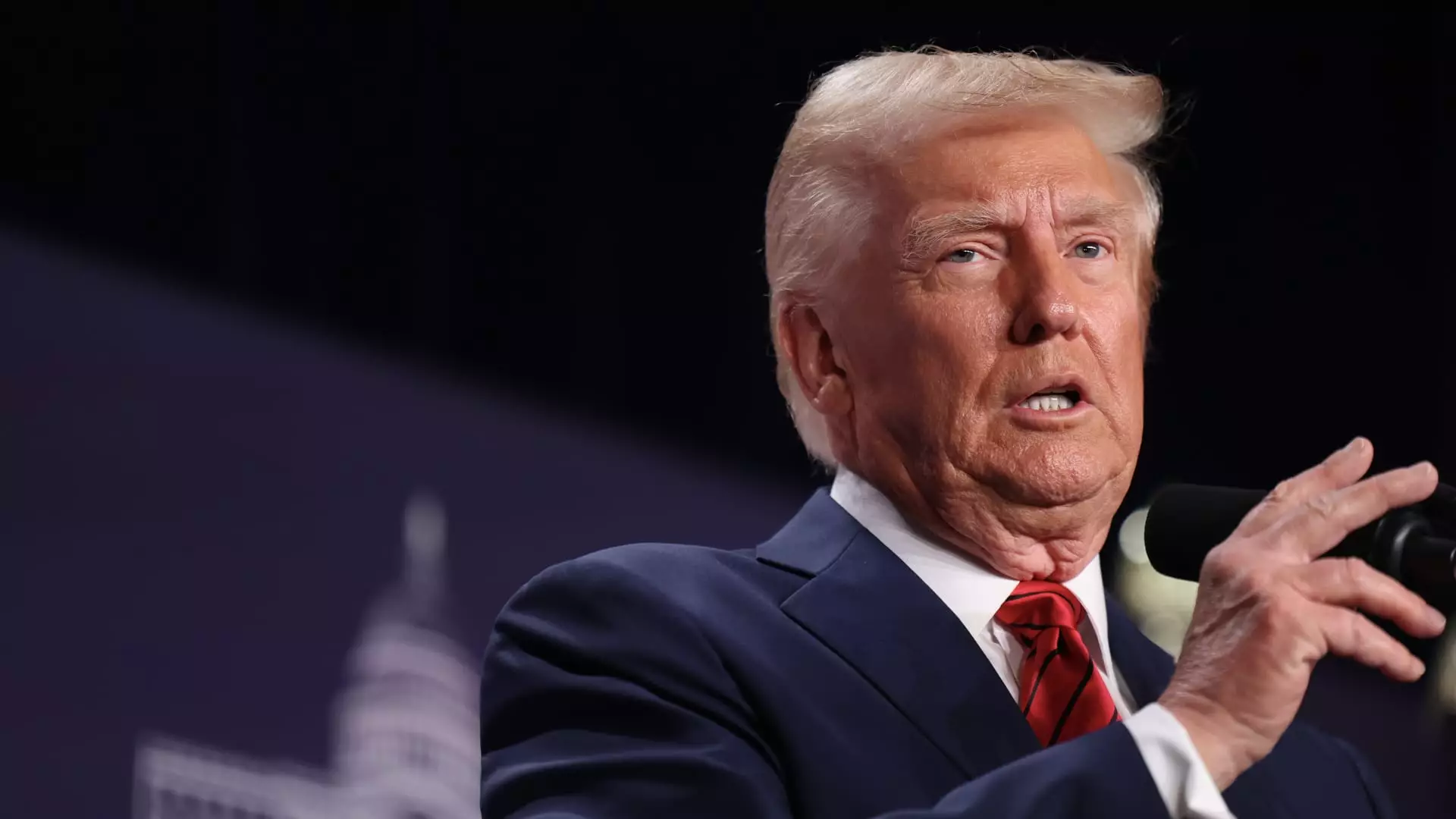The discourse surrounding tariffs, particularly during political elections and subsequent administrations, often positions them as a tool for economic growth and protectionism. Former President Donald Trump’s proposed tariffs on goods from major trading partners—Canada, China, and Mexico—have reignited debates about their implications for consumers, businesses, and the overall economy. As these tariffs loom, there are substantial prospects for both short-term and long-term ramifications that warrant careful analysis.
Tariffs serve as taxes imposed on imported goods, primarily aimed at leveling the playing field for domestic producers by increasing the cost of foreign products. The Trump administration’s proposal to implement tariffs of 25% on products from Canada and Mexico and a 10% duty on Chinese imports highlights the administration’s strategy to bolster American industries. However, this simplistic view of tariffs neglects to consider the complex web of global supply chains and the reality that U.S. businesses often rely on imported components for their products, from electronics to apparel.
Economists have consistently warned against the potential fallout of these tariffs. Mary Lovely, a senior fellow at the Peterson Institute for International Economics, articulated a key concern: “It’s hard to find positives,” she said, emphasizing that tariffs invariably lead to increased costs for consumers. As businesses face heightened import costs due to tariffs, many are likely to pass on these expenses directly to consumers, resulting in an inevitable surge in retail prices.
The immediate impact of tariffs is a likelihood of reduced purchasing power for American consumers. With prices rising across essential goods—ranging from food products to electronics—families may find their budgets stretched thin. As Lovely noted, the increased financial burden could significantly diminish consumer choice as well. With manufacturers seeking cheaper alternatives, some brands might be sidelined, leading to a homogenization of products available on shelves.
Moreover, while President Trump suggested that certain imports, like Canadian oil, might be exempt from tariffs, such carve-outs represent only a partial mitigation of consequences. Economists like Mark Zandi point out that exemptions do little to address the overarching economic impact, which is expected to be negative, particularly if China retaliates with its own tariffs. The chain reaction of retaliatory measures could push prices even higher, compounding hardships for the average American household.
The projections around the financial impacts of the proposed tariffs are stark. The Committee for a Responsible Federal Budget estimates that the 25% tariffs on Canada and Mexico, combined with a 10% tariff on China, could yield revenue of approximately $1.3 trillion through 2035. However, this figure belies the broader economic implications, which suggest a shrinking U.S. economy, particularly if trading partners retaliate.
Specific analyses forecast a possible contraction of $55 billion in the U.S. economy if China responds with reciprocal tariffs. The implications for gross domestic product (GDP) could be even graver for tariffs imposed on Canada and Mexico, potentially reducing GDP by up to $200 billion. Such losses raise critical questions about whether the anticipated benefits of tariffs would outweigh the economic drawbacks.
Though tariffs are often marketed as a strategy to create job opportunities in the U.S., economists highlight a disproportionate effect on employment concerning manufacturing. The claim that tariffs dramatically create U.S. jobs fails to hold water under scrutiny—especially when examining the broader manufacturing ecosystem. For example, for every job created in steel production, approximately 80 jobs are present in industries reliant on steel as an input.
The collateral damage caused by tariffs, therefore, could result in net job losses rather than gains. Additionally, industries such as agriculture and manufacturing that depend heavily on imported raw materials may find themselves in precarious positions. The prospect of losing market access abroad due to retaliatory tariffs adds another layer of risk, threatening the stability of American industry.
While forming a narrative around “America First,” the proposed tariffs by the Trump administration could produce unintended consequences impacting not only consumer prices but also overall economic health. The complexities of global supply chains highlight how interconnected economies are, and how protective measures can lead to broader economic destabilization. As these tariffs loom, consumers, businesses, and policymakers alike must prepare for far-reaching implications that transcend the simplistic notion of protectionism—leading us to question whether these measures genuinely serve the interests of American prosperity, or merely strain it.

